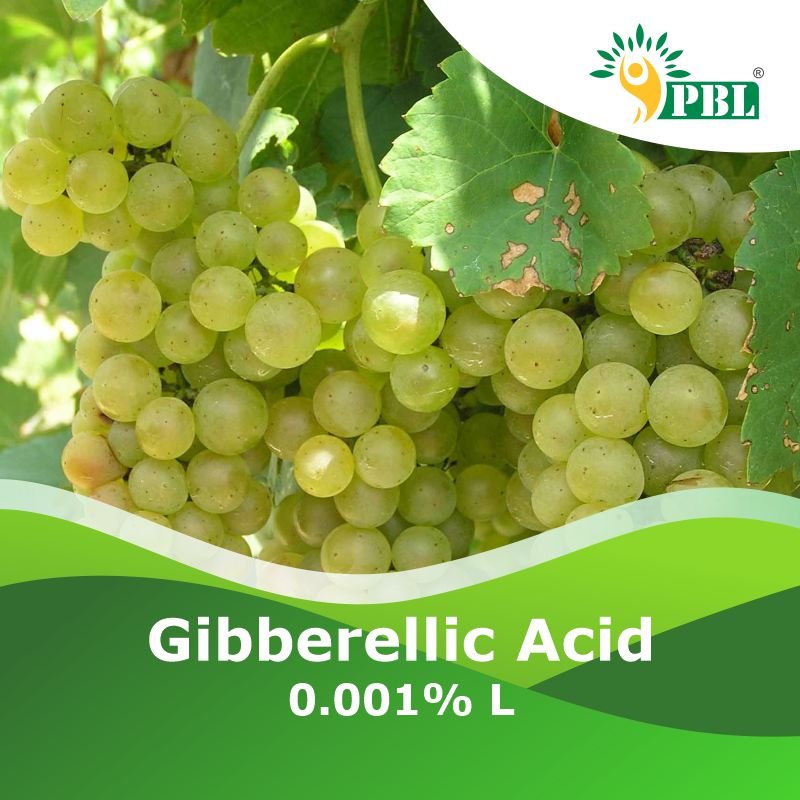Description
Mode of Action of Gibberellic Acid 0.001% L
Stem Elongation: Gibberellic acid promotes stem elongation by stimulating cell division and elongation in the internodal regions. It triggers the synthesis of enzymes that break down the cell wall components, allowing cells to expand and elongate. This process results in increased plant height and internode length.
Cell Division and Elongation: Gibberellic acid influences the cell cycle and cell division, leading to increased cell proliferation. It also enhances cell elongation by stimulating the synthesis of proteins involved in cell expansion. This combination of increased cell division and elongation contributes to overall plant growth.
Seed Germination: Gibberellic acid breaks seed dormancy and promotes germination. It stimulates the synthesis of hydrolytic enzymes, such as amylases, which degrade starch reserves in the seed, providing the energy required for germination. It also promotes the production of enzymes that weaken the seed coat, allowing the emerging seedling to break through.
Flowering and Fruit Development: Gibberellic acid influences the transition from vegetative growth to reproductive growth, promoting flowering. It interacts with other hormones, such as auxins and cytokinins, to regulate floral induction and development. Additionally, it can enhance fruit set and development by stimulating cell division and elongation in the ovary, leading to larger and more developed fruits.
Delaying Senescence: Gibberellic acid can delay senescence (ageing) in certain plant tissues and organs. It inhibits the breakdown of chlorophyll and promotes the synthesis of proteins and other compounds that help maintain tissue integrity and function. This property can be beneficial for extending the shelf life of harvested crops.
Benefits of Gibberellic Acid 0.001% L
- Stimulates stem elongation.
- Promotes seed germination.
- Enhances flowering and fruit development.
- Delays senescence.
- Improves crop productivity.
Target Crop(s), Application Time, and Dosage of Gibberellic Acid 0.001% L
| Crop(s) | Application Time | Dosage/Acre (ml) | Dilution in Water (Lit/Acre) | Waiting Period between last spray to harvest (Days) |
| Grapes | First: 30-35 days after pruning Second: During the match head stage |
72 | 180-200 | 2 |
| Cotton | First spray: 40-45 DAP Second spray: At the time of boll formation |
72 | 180-200 | 2 |
| Banana | First spray: 3rd month Second spray: 5th month Third spray: At the time of fruit formation |
108 | 180-200 | |
| Sugarcane (Planted crop) | First spray: 40-45 DAP Second spray: 75-80 DAP |
72 | 180-200 | 2 |
| Paddy | Short duration: 20-25 DAT Medium duration: 30-35 DAT Long duration: 40-45 DAT |
72 | 180-200 | 1 |
| Cabbage / Cauliflower | First spray: 45 DAS Second spray: 65 DAS |
72 | 180-200 | 2 |
| Onion | 25-30 days after planting | 72 | 180-200 | 1 |
| Brinjal / Bhendi | First spray: 34 DAP Second spray: 70 DAP Third spray: 105 DAP |
180 | 180-200 | 3 |
| Ground nut | 30-35 days after sowing Second spray: At the time of flowering |
72 | 180-200 | 1 |
| Mulberry | First spray: 15-20 days after harvest Second spray: 25-30 days after first spray |
180 | 180-200 | 2 |
Antidote:
No specific antidote is known. Treat symptomatically.

